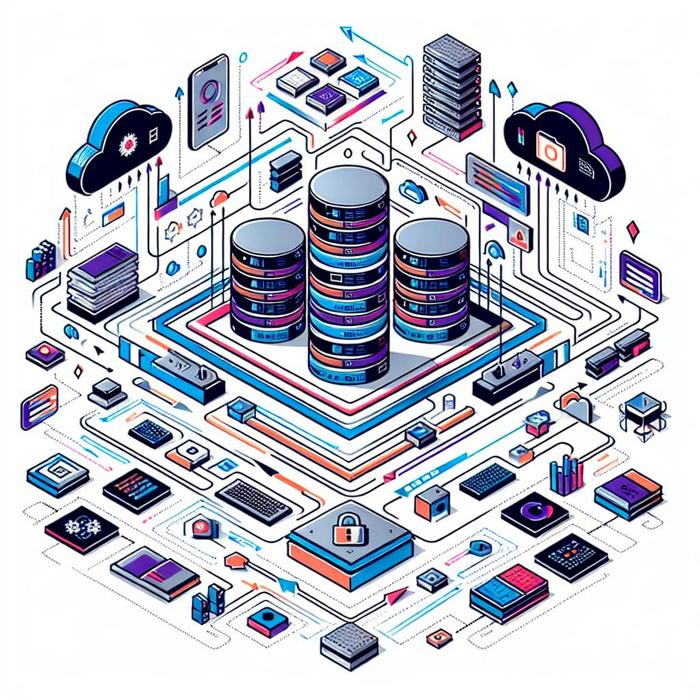Table of Contents Hide
Exploring the Benefits of Using a Data Catalogue
 6 MIN. READING
6 MIN. READING
Why Should CIOs, CTOs, and IT Leaders Consider a Data Catalogue?
Have you stopped to question how a data catalogue could make your extensive data landscape more manageable and valuable? As a decision-maker in data infrastructure, the benefits of a data catalogue could facilitate your strategic decision-making.
Data Catalogue: An Asset for Enhanced Accessibility and Discovery
At the heart of the matter, a data catalogue is an organized inventory of data assets in an enterprise. It aids in data discovery by helping users find, understand, and trust their data. It offers metadata management, search & discovery, governance, and collaboration capabilities.
But, why should this interest you as a data-savvy leader?
Delving Deeper into the Merits of Data Catalogues
- Unified Data Access: The virtual data layer provided by database virtualization makes data from disparate sources readily available, without moving or replicating it. This is vital in an era where time is worth more than money.
- Enhanced Data Provisioning: The ability to provide data faster and more efficiently for analytical purposes can prove to be a game-changer in strategic decision-making.
- Data Anonymization: Ensuring regulatory compliance while maintaining the quality and usefulness of the data is a growing concern. Database virtualization, coupled with data anonymization, can help address this. The process of data anonymization protects sensitive information by altering or encrypting identifiers that link data to individuals.
- Data Governance: A data catalogue also assists in data governance by mapping data lineage and establishing ownership, thereby improving the overall trust in the data.
Leadership and the Role of a Data Catalogue
As a CTO, CIO, or IT leader, your central challenge is to make strategic decisions that would maximize the utility of your data landscape. A data catalogue could be the key to unlock the hidden potential of your organization’s data resources.
By providing enhanced visibility into the organization’s data assets, a data catalogue can act as the foundation for data-driven decision-making. It can help identify data silos, enhance data preparation, and expediate the journey to data democratization.
Transforming Strategies with a Data Catalogue
A data catalogue can be the catalyst for transforming your data strategies. It can drive value from existing data, foster innovation, and guide future data investments.
When implemented with other advanced data solutions like database virtualization, a data catalogue can provide a seamless integration of data sources, irrespective of their location, format, or volume. This can help expedite the time to insights from data, thereby providing a competitive edge to your organization.
Moreover, aligning data anonymization strategies with the data catalogue can ensure regulatory compliance while promoting the usage of data for insights. This approach not only ensures the protection of sensitive information but also enables more secure and effective use of data.
Harmonizing these aspects can lead to the creation of a robust data ecosystem that fuels innovation, assures compliance, and drives strategic decision-making.
Exploring the Landscape of Data Catalogues
Understanding the full potential of your data assets and knowing how to harness them is critical. Exploring free data catalogues like Subak and CESSDA can provide an understanding of their essential features and usage.
Remember, the goal is not just the adoption of more advanced data solutions; it is also the intelligent utilization of these tools to optimize data operations.
How database virtualization enhances usage of data catalogues
Implementing database virtualization solutions along with a data catalogue reaps manifold benefits. It creates a virtual layer, unifying access to multiple disparate data sources. This unparalleled ability to aggregate data from various silos eradicates the need for data replication, thus streamlining operations.
Quick on-demand access to data significantly curtails the time required to gather and prep data, adding agility to data-utilizing processes. A role-based access control also secures the data and curtails any unauthorized exploitation. Given the pace of today’s business landscape, the speed and accessibility offered by database virtualization integrated with a data catalogue can provide a distinct competitive edge.
The vital role of data anonymization
In addition to visibility and operability, regulatory compliance around data usage is another perturbing issue in data management. In the wake of stringent data protection regulations like GDPR, HIPAA, and PCI DSS, leaders confront an obligation to maintain data privacy without compromising data usability.
Through data anonymization, sensitive credentials are replaced with fictitious yet similar data elements, preserving data privacy without losing its analytical value. Coupled with a data catalogue that facilitates data discovery and usage, data anonymization provides a secure environment for data handling, mitigating any legal breaches or undesirable outcomes.
Data Catalogues and Innovation
Most businesses are already fostering a culture of innovation and aggressively investing in data-driven solutions. However, the principal challenge continues to revolve around leveraging the right data at the right time. As a technology leader, incorporating a data catalogue into your data management strategy can make all the difference.
Acting as a conduit, a data catalogue paves the way to innovate at scale by catalyzing the efficient use of data. As it transforms raw data into the fuel needed for data-driven decisions, it stokes the flames of innovation, leading to improved product discovery, refined business intelligence, and compelling customer experiences.
Navigating the current data age
Indeed, a data catalogue could be pivotal for CIOs, CTOs, and IT leaders in making the most of their organization’s data capabilities. Its adoption should be considered not merely as the incorporation of a new tool, but as a gateway towards a transformation in decision-making, innovation, and value creation.
Starting from understanding modern data catalogues like The World Bank’s Data Catalog, and the Joint Research Centre’s Data Catalog, the insights gleaned can be harnessed to appropriate similar practices within your organization.
To fully leverage the power of data, it’s crucial not just to collect, store, and process it, but to adopt advanced solutions like a data catalogue, database virtualization, and data anonymization techniques.
Should you stop at just adopting these innovative data techniques? Not at all. In this evolving era, capitalizing on every opportunity to leverage data can direct you closer to achieving your strategic business goals. Data is here to stay, and the more efficiently and intelligently you handle it, the more significant the rewards will be.


